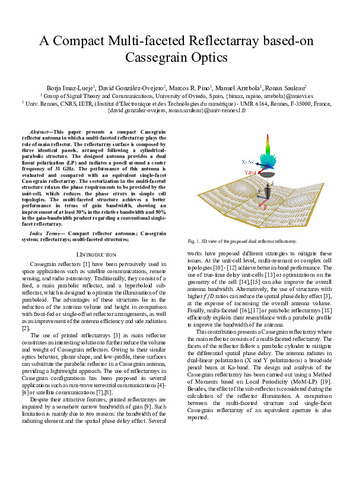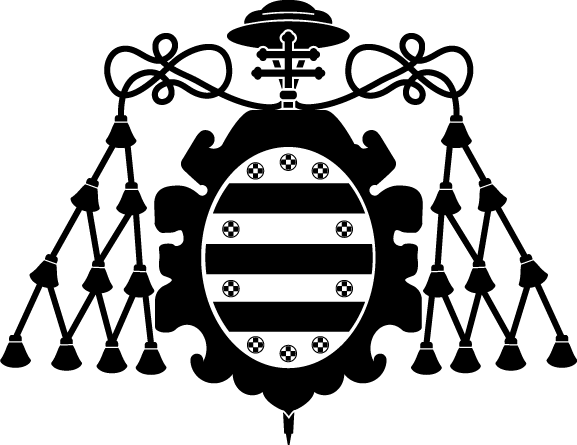A Compact Multi-faceted Reflectarray based-on Cassegrain Optics
Autor(es) y otros:
Palabra(s) clave:
compact reflector antennas
Cassegrain systems
reflectarrays
multi-faceted structures
Fecha de publicación:
Resumen:
This paper presents a compact Cassegrain reflector antenna in which a multi-faceted reflectarray plays the role of main reflector. The reflectarray surface is composed by three identical panels, arranged following a cylindricalparabolic structure. The designed antenna provides a dual linear polarization (LP) and radiates a pencil around a center frequency of 31 GHz. The performance of this antenna is evaluated and compared with an equivalent single-facet Cassegrain reflectarray. The sectorization in the multi-faceted structure relaxes the phase requirements to be provided by the unit-cell, which reduces the phase errors in simple cell topologies. The multi-faceted structure achieves a better performance in terms of gain bandwidth, showing an improvement of at least 30% in the relative bandwidth and 50% in the gain-bandwidth product regarding a conventional single-facet reflectarray.
This paper presents a compact Cassegrain reflector antenna in which a multi-faceted reflectarray plays the role of main reflector. The reflectarray surface is composed by three identical panels, arranged following a cylindricalparabolic structure. The designed antenna provides a dual linear polarization (LP) and radiates a pencil around a center frequency of 31 GHz. The performance of this antenna is evaluated and compared with an equivalent single-facet Cassegrain reflectarray. The sectorization in the multi-faceted structure relaxes the phase requirements to be provided by the unit-cell, which reduces the phase errors in simple cell topologies. The multi-faceted structure achieves a better performance in terms of gain bandwidth, showing an improvement of at least 30% in the relative bandwidth and 50% in the gain-bandwidth product regarding a conventional single-facet reflectarray.
Descripción:
European Conference on Antennas and Propagation (EuCAP) (17th. 2023. Florence, Italy)
Patrocinado por:
This work was supported in part by MICIN/AEI/10.13039/501100011033 within the projects PID2020-114172RB-C21 and TED2021-130650B-C22; by Gobierno del Principado de Asturias under project AYUD/2021/51706; and by Spanish Ministry of Education under grant FPU18/0575.
Colecciones
Ficheros en el ítem





